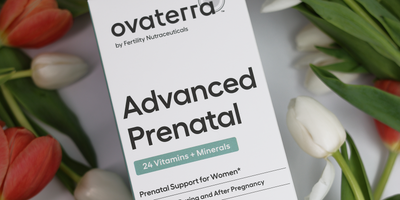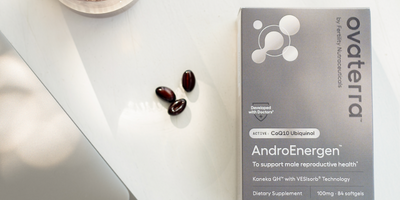[Last reviewed & updated on 11/11/2022]
A vast majority - 97% in one estimate - of pregnant women in the US take prenatal vitamins during pregnancy. However, a majority of these women don’t get enough brain-building choline. Nearly half have insufficient intake of other key pregnancy-supporting nutrients like Vitamin D. 1 in 8 to 10 of us are low in folate, iodine and others. Let’s understand what nutrients we are most likely to be low in, and why this can happen even to those of us who diligently take prenatal vitamins.
The good news
A 2019 study in JAMA Network Open that analyzed the National Health and Nutrition Examination Survey data found that less than 10% of pregnant women were at risk of low intake of thiamin, riboflavin, niacin, copper and selenium. Taking prenatal vitamins were shown to make a difference, too: The risk of nutrient deficiency was lower when prenatal vitamins were a part of the women’s daily routine.
The bad news
Even when including the contribution of prenatal vitamins, though, a significant proportion of pregnant women were deficient in multiple nutrients – many crucial for the mother’s health and wellbeing during pregnancy and lactation, as well as the baby’s development in utero and after birth.
According to the study, there are nearly 50-50 chance that you are low on these nutrients:
- Magnesium: Involved in over 300 enzymatic processes in the body, magnesium supports nerve and muscle function, blood pressure regulation and healthy bone development in the baby.
- Vitamin D: Vitamin D works with Vitamin K to increase calcium absorption and retention, which supports the development of strong bones in the baby, while protecting the mom’s.
- Vitamin E: A potent antioxidant, Vitamin E protects cells and their DNA – including eggs, sperm and embryos – from damages from reactive oxygen species.
The chance is 1 in 3, when it comes to iron intake. A key component of hemoglobin (the delivery vehicle of oxygen), iron drives growth, neurological development and cellular functioning.
It’s less likely that you are getting insufficient amounts of these nutrients, especially if you are eating a balanced diet and taking good-quality prenatal vitamins. But the risks are still 1 in 8 to 10, which isn’t negligible:
- Folate: Folate is one of the most well-known essential nutrient during early pregnancy that helps the development of central nervous system and – as a part of a healthy diet – reduces the risk of neural tube defects in the baby.
- Calcium: A foundation of strong bones and teeth for the baby, an adequate calcium intake also protects the mom’s bones and teeth during the time of intense calcium needs.
- Vitamin B6: Vitamin B6 is a necessary component of the process that produces hemoglobin, the protein in red blood cells that carry oxygen throughout the body of the mom and the baby. Along with other B vitamins, consistent intake of Vitamin B6 has been associated with healthy ovulation in a study of over 18,000 women.
- Zinc: During pregnancy and when nursing, women are at a higher risk of zinc insufficiency, partly because the baby needs a lot of zinc for healthy growth - DNA synthesis, protein synthesis and rapid cell division all require zinc. It’s also deeply involved in immune functions.
Other studies have found similarly widespread depletion among pregnant women.
- Iodine: More than half of pregnant women don’t have the minimum amount of iodine recommended by the WHO. Iodine is a building block of thyroid hormones, which plays multiple important roles in female reproduction, from production of reproductive hormones to regulation of ovulation to development of endometrium.
- Folate: While “only” about 17% of women have less than the recommended amount of folate in their diet, some groups are at higher risk of deficiency. For example, almost 1 in 4 of African American women don’t get enough folate from diet and supplements combined.
- Choline: Most women in the US do not get enough choline. Average intake of choline is about half of the recommended daily amount (550 mg), less than a quarter of the optimal amount (930 mg). Choline, like folate, drives the baby’s brain development. It’s a crucial component that the baby uses to build brain cells and neurotransmitters.
- Vitamin B12: About a quarter to one-third of women of childbearing age don’t have enough Vitamin B12 in their diet. Vitamin B12 is an essential nutrient for the formation and functioning of the central nervous system, and supports the mom’s energy levels by supporting the development of red blood cells.
One reason women don’t get enough nutrients: Less nutritious foods
Why are moms-to-be still so frequently low on important nutrients, when they do the right thing and take prenatal vitamins? There are multiple reasons – and at least some of them are within our control.
You may have heard that fruits and vegetables aren’t as nutrient-dense as they used to be, due to various factors in modern farming practices. That’s a part of what’s happening. We know women do their best to eat healthy when trying, pregnant or nursing, but the foods we rely on aren’t always delivering the vitamins, minerals and macronutrients we expect from them.
Many prenatal vitamins don’t deliver
Another factor is the prenatal vitamins. While OBGYN doctors often tell patients that all prenatal vitamins are pretty much the same and they can take whatever is convenient, that’s not the case. The truth? Some prenatal vitamins are built with more science-based consideration than others, and that makes a difference.
Prenatal vitamins often contain inadequate amounts
It’s usually not necessary and ideal to meet 100% of your nutritional necessity from prenatal vitamins. In one estimate, we’d need 16 capsules in order to get all the prenatal nutrients at optimal levels. However, it’s also unrealistic to expect one tiny tablet or capsule of prenatal vitamins to deliver a meaningful amount of dozens of micronutrients your body need. So, if your prenatal vitamins are in the one-a-day format, it's likely you are not getting enough of the key nutrients.
In fact, most prenatal vitamins do not contain sufficient amounts of the key nutrients, like choline, that doctors know many pregnant women are low on – and should be considered a helpful but small add-on to your prenatal health, rather than its foundation.
Nutrients in prenatal vitamins may be in suboptimal forms
Form and bioavailability of the ingredients also play a role. Many nutrients have multiple molecular forms, some more active and bioavailable than others.
One example is Vitamin D. Of the two main forms of Vitamin D, Vitamin D3, which is the form that our skin synthesizes when exposed to sunlight, has been shown to be easier for the body to use than Vitamin D2. Vitamin D2, a plant-derived and cheaper source of Vitamin D in supplements and fortified foods, has been shown to be less effective in raising the level of Vitamin D in the blood.
Another example is minerals. Iron and other minerals are difficult for the body to absorb (which is one reason many women have trouble with nausea and constipation when taking prenatal vitamins). One way to make minerals more absorbable is to chelate them – to bind the mineral iron to another molecule to make them water-soluble. So, women taking prenatal vitamins with non-chelated iron (which is unfortunately very common) may not be absorbing as much iron as the label suggests.
Genetics also play a role
Most of the studies cited above have one drawback in common: They mostly look at the intake, not how much of the active nutrients are actually circulating in the body. This distinction is important, because many key nutrients need to be converted in the body to an active form before they can do the job – and a significant portion of women have genetic variations that make these conversion processes inefficient.
Women with inefficient conversion may have more than adequate amount of a nutrient in their diet and still be low in the active form. To really know someone’s nutritional status, we would need to measure the amount of the nutrients in their active forms in the blood (or in the urine, in the case of iodine).
Folate is the most well-known of this genetic effect. Many prenatal vitamins (and fortified foods) use the synthetic folic acid, which needs to be converted in the body to the active folate. This conversion process is negatively affected by variants of the MTHFR gene – and an estimated 40-60% of women in the US have a variant of MTHFR gene on one allele; up to 1 in 4 Hispanic women have this variant on both alleles. Women with these genetic variants may not generate enough folate from the folic acid in supplements, while the same amount of folic acid may be enough for women without the variants.
Another example is Vitamin A, an important nutrient before, during and after pregnancy. There are two types of Vitamin A: Carotenoids and preformed Vitamin A. Carotenoids (also called provitamin A) like Beta-Carotene need to be converted into active form of Vitamin A like retinols in the body. People with some variations of the BCO1 gene can have lower amount of an enzyme that drives this conversion process, and may not be able to generate as much active Vitamin A from Beta-Carotene and other carotenoids.
What to do to make sure you get what you need to thrive during pregnancy
It’s unfortunately very common for moms-to-be to be at a less than optimal state nutritionally, even with prenatal vitamins. What to do, then?
- Be realistic about what prenatal vitamins can and can’t do: Prenatal vitamins do help, but they can’t provide all the nutrients you and your baby will need, in order to have a healthy pregnancy and feel your best.
- Vary and optimize your diet: Prenatal vitamins and your diet have to work hand-in-hand to support you and the baby. Eat a balanced diet that includes a wide variety of whole foods to increase the chance that you are covering all the bases. Try incorporating foods from other cultures to mitigate the risk of deficiencies that may be rooted in the typical way you eat. (For example, eat more seaweed to boost your iodine intake.)
- Start taking prenatal vitamins if you are trying: Nutrients like folate and choline play a key role in the early days of pregnancy, when you may not realize that you are pregnant. So, once you know you want to get pregnant, add prenatal vitamins to your daily routine.
- Choose the prenatal vitamins that truly support you: It can be hard to know how to choose your prenatal vitamins, but do your research, and pick the prenatal vitamins that can really make a difference. Your doctor may be able to help you – and of course, we are happy to help.
- Taking one is better than none: If you have too much else going on at the moment, or can’t afford a high-end prenatal, just take a prenatal – any prenatal, as long as it has at least 600 mcg of folic acid for the baby’s brain health. It’s better to take something than nothing.












